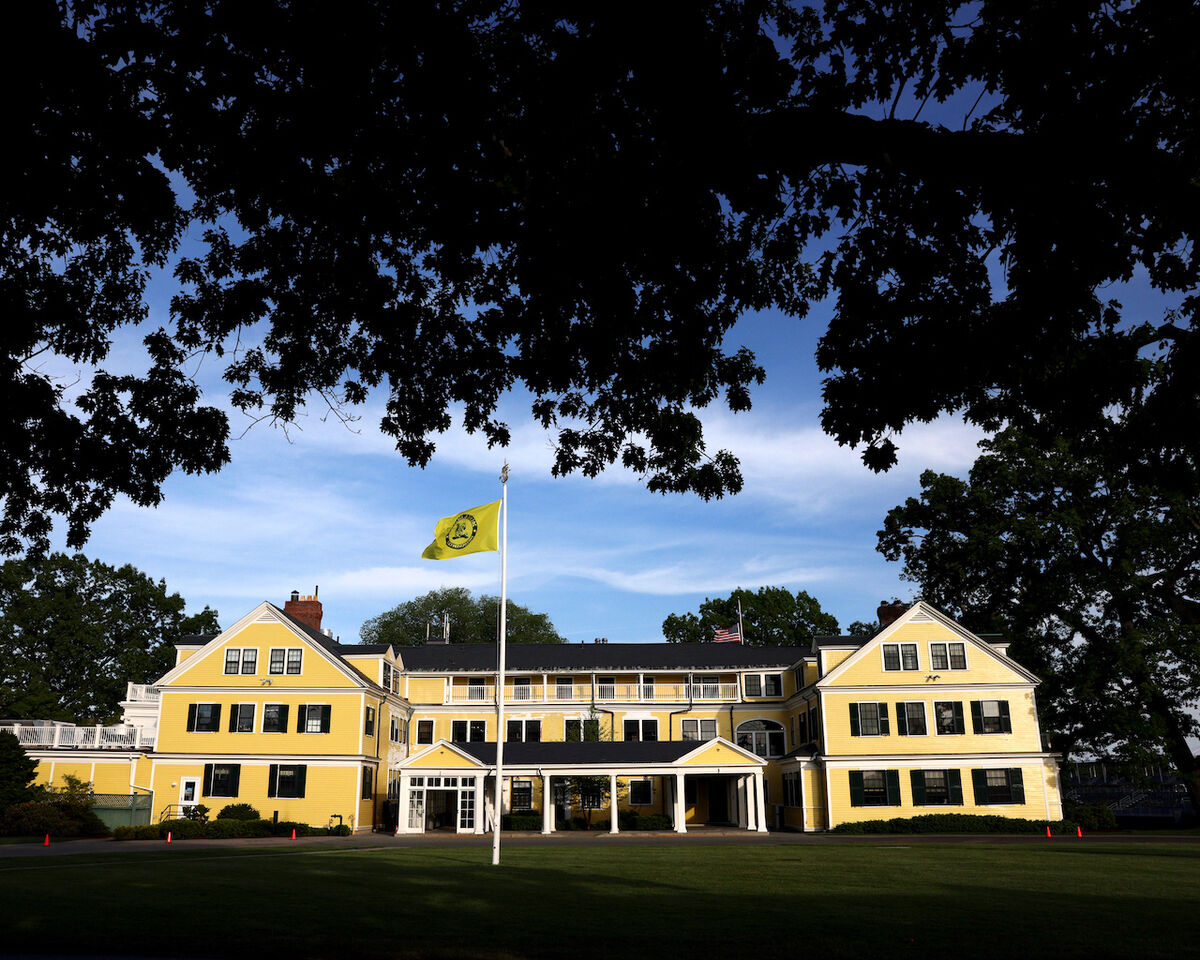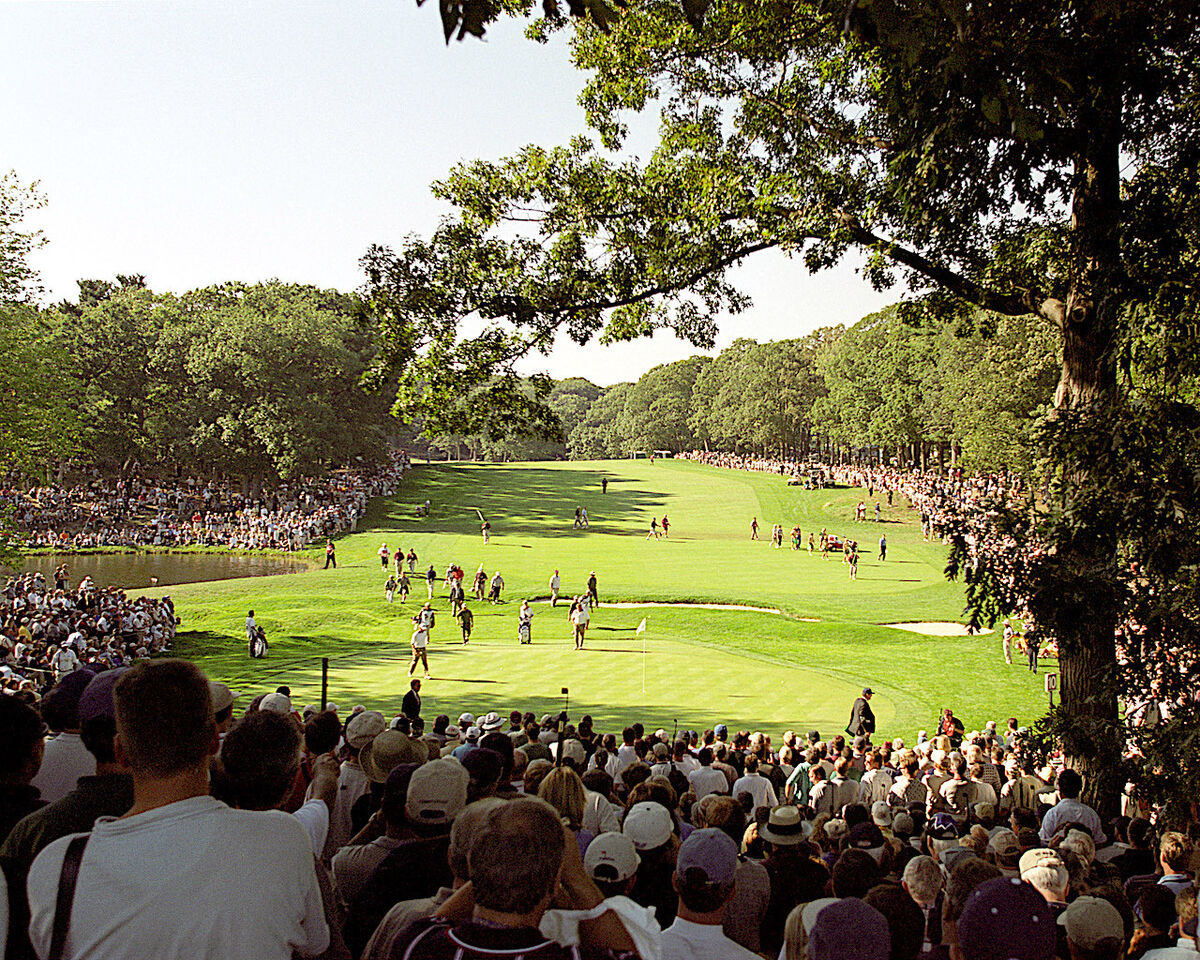The Country Club: Rich History of America's First Country Club

As with golf itself, country clubs originated in Scotland. These clubs gave upper-class members a place to enjoy golf and other forms of recreation. The first American country club, still known simply as The Country Club, was founded outside Boston in Brookline, Massachusetts in 1882. This is the story of The Country Club, its rich history, and some of its fascinating figures.
Golf has roots dating at least to the Middle Ages in Scotland, with major developments in the 18th and 19th centuries leading to the first expansion of golf throughout the world, notably in America.
The earliest known reference to golf in America is far from the genteel surroundings of a country club, and instead featured a misdemeanor. Court records from 1657 show that two drunk men were arrested in Albany, New York for breaking windows while playing golf. The next documentation of golf in America didn’t occur until the 1740s when it was recorded that a man in Charleston, South Carolina ordered over 400 balls and nearly 100 golf clubs. The first mentions of informal golf courses and gentlemanly associations began during this period. However, the game slowly picked up steam in America and the nation’s first country club was not established until 1882.
The Country Club
While country clubs today are baked into golf’s identity, they did not become integral to the game until the late 19th and early 20th centuries.
The Country Club was founded by wealthy patrons as a private, members-only organization that provides recreation and dining facilities to its members. Initially, the club focused on horse racing, polo and other equine events, as well as outdoor leisure activities such as lawn bowling and tennis. However, a 6-hole golf course was built in 1893, though it shared land with some areas designated for horses, leading to inevitable conflict.
In 1894, The Country Club hired famed Scottish prodigy Willie Campbell as club professional. Campbell expanded the course to nine holes, and eventually, golf dwarfed the other club activities as the course expanded to the now-standard 18 holes in 1899.
The Country Club proved integral to golf’s history in America, not only in helping to establish country clubs as a tradition in the sport, but by becoming a founding club of the United States Golf Association.
The USGA was founded in 1894 by five of America’s earliest golf clubs ostensibly to regulate golf in America. The initial focus was on organizing the U.S. Amateur, as amateur golf was then the most common game in America (at the time most professionals were, like Willie Campbell, British golfers lured to America). In addition to the U.S. Amateur, first contested in 1895, the USGA also founded the U.S. Open in 1895, considered one of golf’s most prestigious tournaments and one of only four major championships.
The Country Club hosted its first U.S. Open in 1913 when American amateur and former Brookline caddy Francis Ouimet famously won, outdueling British professionals Harry Vardon and Ted Ray.
The 2022 U.S. Open will be the fourth hosted at The Country Club, in addition to six U.S. Amateurs, three U.S. Women’s Amateurs, and the 1999 Ryder Cup.
Timeline and History of The Country Club in Brookline
With rich history that dates back to the 1800s, The Country Club has been among the most prestigious golf facilities in the United States and the world. Here’s a closer look at the club’s history.
1882: The Country Club was Founded
The Country Club was founded in 1892 in Brookline, Massachusetts. The original club was centered more on equine activities, and the club did not even include a golf course for the first decade-plus.
1893: Original 6-Hole Layout Opens
Three members laid out The County Club’s original 6-holes, officially bringing golf to the club for the first time.
1894: Willie Campbell and the USGA
1894 was a big year for The Country Club. Willie Campbell became the club’s first golf professional, and The Country Club became one of the five founding clubs of the United States Golf Association.
1899: The Country Club Becomes an 18-Hole Course
By 1899, Campbell expanded the course to a full 18 holes.
1908: Three New Holes Created
After The Country Club acquired additional land, two members designed three additional holes, bringing the total to 21 holes. The course remained a 21-hole facility for nearly 20 years.
1913: The Francis Ouimet U.S. Open
In 1913, amateur Francis Ouimet took down the biggest names in golf to win the U.S. Open in his own backyard. If you don’t know the incredible story of Ouimet’s astounding win, check out the book or movie The Greatest Game Ever Played. The Country Club is a critical character in the story, helping fuel, and accommodate Ouimet’s success.
1927: The Final Six Holes Are Built
The final six holes are built to complete a 27-hole golf facility. The Clyde and Squirrel nines combine to make up the “main course” while the Primrose provides another nine holes.
1963: TCC Hosts its Second U.S. Open
Julius Boros won the 1963 U.S. Open at The Country Club in a playoff over Jacky Cupit and Arnold Palmer.

1988: TCC Hosts the U.S. Open
After Rees Jones was commissioned to update the golf course, The Country Club hosted the 1988 U.S. Open, won by Curtis Strange in an 18-hole playoff against Nick Faldo.
Through three U.S. Opens contested at The Country Club, every one was decided in a playoff.
1995: TCC Hosts U.S Women’s Amateur
Kelli Kuehne won the 1995 U.S. Women’s Amateur at The Country Club 4&3 over Anne-Marie Knight. Just one year earlier her brother, Trip Kuehne, held a commanding 5-up lead over Tiger Woods with 12 holes to play in the 1994 U.S. Amateur at TPC Sawgrass before Tiger staged a massive comeback and clinched the title on the famous 17th green.
1999 Ryder Cup: The Battle at Brookline
The 1999 Ryder Cup at The Country Club, known to this day as “The Battle at Brookline” will forever be remembered for Justin Leonard’s 45-foot putt that all but sealed Team USA’s comeback after trailing 10-6 heading into Sunday singles. Although José María Olazábal still had a putt to extend the match, players, family, and fans stormed the green causing a raucous scene.
2013: U.S. Amateur Returns to The Country Club
The Country Club hosted its first USGA Championship since the 1995 U.S. Women’s Amateur when the 2013 U.S. Amateur visited TCC. Matt Fitzpatrick won 4&3 over Oliver Goss.
2019: Gil Hanse Restoration
With the goal of making the course design more cohesive and representative of its original form, Gil Hanse began a restoration of The Country Club.
The Country Club Fun Facts
The Country Club boasts some fascinating fun facts.
- All three U.S. Opens hosted at The Country Club have gone to a playoff
- The list of players who have lost a U.S. Open playoff at The Country Club includes Ted Ray, Harry Vardon, Arnold Palmer, Jacky Cupit and Nick Faldo
- Former Massachusetts governor Deval Patrick was denied membership to the club while he was governor
- Donald Ross, known for designing some of the best courses on the east coast, won the 1911 Massachusetts Open at The Country Club
- Because The Country Club was designed by various members at several different times, there is no one person to put their name on the course as course architect
- The 2022 U.S. Open routing is a composite of the Main Course and the Primrose Course, utilizing 15 holes from the Main Course and three from the Primrose
- In 2017, The Boston Globe reported that Tom Brady and his wife Gisele Bundchen were admitted as members, two years after applying
The Country Club Membership Information
Membership at The Country Club is about as exclusive as it gets. You can’t simply stroll into the pro shop, cut a check, and mosey off to the first tee. Did we mention that even an active governor had his membership application rejected?
The cost of membership at The Country Club is a well-kept secret, and even though it’s likely to be an amount most hard-working folks can’t afford to spend on golf, access to membership is based more on lineage than money.
It’s reported that the application process requires applicants to be sponsored by two current members, submit seven personal references, and attend a special cocktail reception with the powers that be.